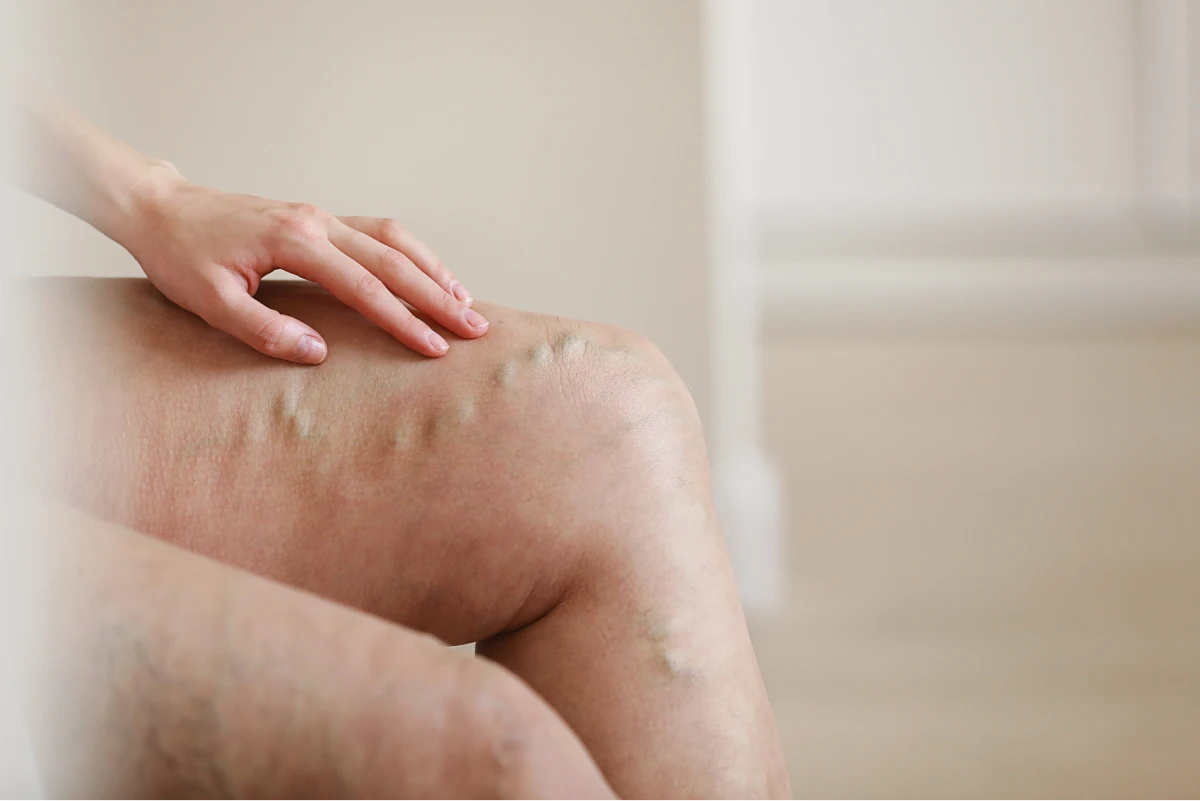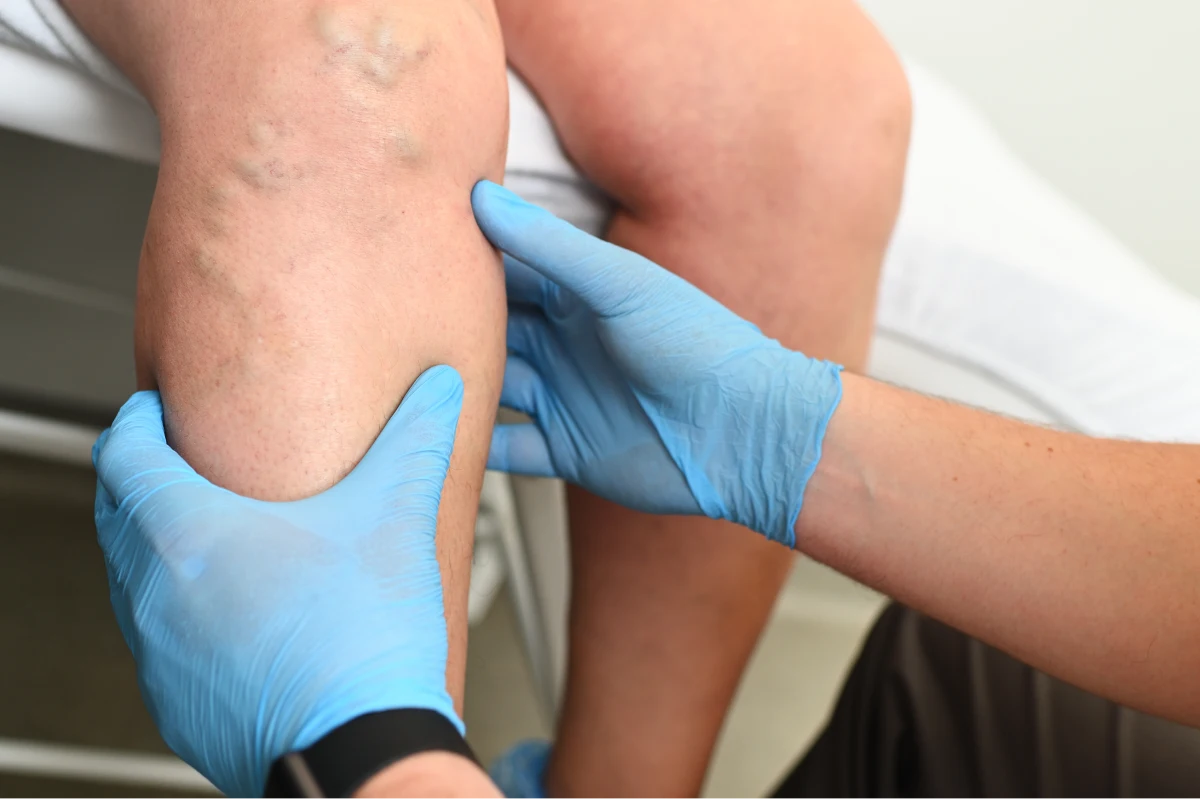In the past, treating vein conditions such as varicose veins and spider veins required invasive surgery, prolonged recovery, and often resulted in visible scarring. Thanks to advancements in medical technology, modern treatments for varicose veins and other vein conditions are now less invasive, offer faster recovery, and are highly effective in relieving symptoms and cosmetic concerns.
Let’s explore the incredible options available nowadays to heal varicose veins and improve overall leg vein health.

Understanding Varicose Veins
Varicose veins are a common condition characterized by the swelling and enlargement of veins in the legs.
They occur when the walls of the veins weaken, allowing the vein to get bigger and the valves that keep blood moving in one direction to malfunction.
This can cause the vein to swell, bulge, and twist, leading to a range of symptoms and potentially serious complications.
Symptoms and Causes of Varicose Veins
The symptoms of varicose veins can vary from person to person, common signs include:
- Leg’s swollen;
- Twisted feeling;
- Bulging veins;
- Pain or discomfort in the legs;
- Itching or burning sensations in the affected area;
- Skin discoloration or darkening of the skin;
- Ulcers or open sores on the skin’s surface;
Varicose veins occur when the walls of the veins weaken, which caused by a range of factors:
- Increased blood pressure;
- Poor circulation;
- Genetics;
- Age;
- Obesity;
- Prolonged standing or sitting;
- Hormonal changes;
- Injury or trauma to the vein;

Traditional vs. Modern Techniques to Treat Varicose Veins
We will start by understanding what was used to treat varicose veins before the advent of cutting-edge methods. We will start with traditional vein surgery, such as Vein Stripping.
Traditional Vein Stripping Surgery: A Thing of the Past
Traditional vein stripping surgery was the gold standard for treating varicose veins, particularly larger ones. This type of vein surgery involves removing damaged varicose vein through large incision. Patients faced:
- Long recovery periods;
- Potential complications;
- Visible scarring;
This method was effective in removing varicose veins, and now largely replaced by modern, minimally invasive solutions that offer the same results without extensive downtime and a hard recovery period.
Modern Minimally Invasive Procedures
Today’s cutting-edge varicose vein treatment options focus on minimal invasiveness. We have procedures requiring only small incisions or injections, allowing you to return to normal activities much more quickly. These treatments include:
- Endovenous Laser Ablation (EVLA)
- Radiofrequency ablation (RFA)
- VenaSeal
These treatments are performed outpatient, often with local anesthesia, making them far more suitable than traditional vein surgery.
Varicose Veins: Why Do They Develop?
Varicose veins occur when the valves in the veins, usually in the legs, weaken or become damaged. Varicose veins develop because of the following factors:
- Standing or sitting for long periods
- Genetics
- Pregnancy
- Obesity
Varicose veins can cause discomfort and swelling and even lead to more serious health issues like Deep Vein Thrombosis (DVT) or Pulmonary Embolism if left untreated.
Serious Complications of Varicose Veins
While most people don’t experience complications from varicose vein states, in some cases, an untreated varicose vein can cause serious problems. These can include:
- Ulcers (open sores);
- Bleeding;
- Inflammation;
- Skin discoloration;
- Deep vein thrombosis (blood clots);
Severe varicose veins may also be a sign of chronic venous insufficiency (CVI), which affects the veins’ ability to pump blood to the heart.
If you have varicose veins, you may be more likely to develop blood clots, which can be a sign of a clotting disorder that requires monitoring and evaluation by a healthcare provider.

How to Diagnose Varicose Veins
Varicose veins are typically diagnosed through a physical examination, but advanced diagnostic tools like Duplex Ultrasound provide detailed images of blood flow and vein structure.
This painless test helps our vascular surgeons understand the extent of the vein damage and choose the most appropriate varicose vein treatment options for each patient.
Cutting-Edge Treatment Options for Varicose Veins
Now, it’s time to discuss modern treatments like ELVA, RFA, VenaSeal, and others for varicose veins.
Endovenous Laser Ablation (EVLA)
Endovenous laser ablation, or EVLA, is one of the most popular minimally invasive treatments for varicose veins. How it works:
- A thin laser fiber is inserted into the affected vein through a tiny incision.
- Than laser energy is used to heat the vein walls, causing them to collapse and seal shut.
- Over time, the treated veins are reabsorbed by the body, and blood is redirected to healthier veins.
- EVLA is highly effective in treating larger veins and is preferred for many patients seeking a quick recovery with minimal discomfort.
Radiofrequency Ablation (RFA)
Radiofrequency ablation is a minimally invasive procedure that uses radiofrequency energy to heat and close off the damaged vein. How it works:
- Like EVLA, a catheter is inserted into the vein through a small incision,
- Controlled heat is applied to the vein walls, causing the vein to collapse and eventually fade away.
- RFA is often used for large varicose veins and is associated with excellent long-term outcomes.
VenaSeal: A New Kind of Treatment
VenaSeal represents a revolutionary shift in vein treatment technology. This method does not use heat or chemicals but a medical adhesive to seal the affected vein shut. How it works:
- A small catheter delivers the adhesive to treated veins.
- The veins are quickly closed off.
- Since there is no heat involved, patients experience less discomfort, and there is no need for compression stockings after the procedure.
- VenaSeal is particularly suited for patients with a low tolerance for thermal procedures.
ClariVein: Combining Mechanical and Chemical Methods
ClariVein is a cutting-edge hybrid treatment that uses mechanical and chemical actions to close varicose veins. How it works:
- A rotating wire tip disrupts the vein’s inner lining while a sclerosing agent (chemical solution) is infused to seal the vein.
- This dual-action process results in a highly effective treatment for larger and smaller varicose veins.
- Patients typically report minimal discomfort and a fast return to normal activities after this procedure.
Varithena: The Foam-Based Solution
Varithena is an injectable foam treatment designed for larger varicose veins. How it works:
- The foam displaces the blood in the affected vein, causing it to collapse.
- This method is particularly effective for treating larger, more complex varicose veins that may not respond well to other treatments.
- Like other less and noninvasive options, Varithena is an outpatient procedure offering quick recovery.
Spider Veins: Smaller Veins, Big Concerns
After we explored varicose vein treatment, we discussed the other very popular vein disorder, spider veins.
What Are Spider Veins?
Spider veins are smaller, superficial veins on the skin’s surface, often resembling tree branches or spider webs.
While spider veins are generally harmless, they can be a cosmetic concern for many people. Like varicose veins, spider veins develop when blood pools in the veins due to weakened valves.
Advanced Spider and Varicose Vein Treatment Technologies
Fortunately, there are a range of advanced vein treatment technologies available to heal these concerns. These include less invasive procedures such as:
- Sclerotherapy;
- Laser ablation
These treatments work by:
- Closing off the affected vein;
- Redirecting blood flow to more nutritious veins;
- Improving circulation;
In some cases, compression stockings may also be recommended to help manage symptoms and prevent further complications.
Sclerotherapy for Spider Veins
Sclerotherapy is a minimally invasive procedure commonly used to treat spider veins. How it works:
- During the process, a solution is injected into the affected vein, causing it to collapse and eventually fade from view.
- Sclerotherapy is a highly effective treatment for spider veins and can be performed on an outpatient basis with little to no downtime.
- It is often combined with other treatments, such as laser ablation, to achieve optimal results.
Laser Treatment Options for Spider Veins
Spider veins, is a twisted veins visible on the skin’s surface, often develop due to weakened leg veins and other health problems.
Endovenous laser therapy (EVLT) is a modern treatment that uses laser energy to target the affected veins, particularly in areas like the short saphenous veins and calf muscles. How it works:
- First, the doctor will review the patient’s medical history to create a personalized treatment plan, factoring in any family history, allergic reactions, or underlying conditions.
- Laser therapy involves a thin tube being inserted into the treated vein, using laser energy to close off the vein.
- Over the next few weeks, the vein collapses, and the body reroutes blood flow to more restorative veins.
- Most patients will be advised to wear compression stockings post-treatment to support healing and prevent complications like blood clots.
- Ambulatory phlebectomy or other surgical techniques may be recommended for more complex or larger veins, but for smaller spider veins, laser therapy is usually sufficient.
Maintaining a healthy weight and focusing on your health can help prevent the recurrence of spider veins, especially for those with a family history of vein issues.
Quick, Minimally Invasive Solutions for Lasting Results
The technology has changed how we treat spiders and varicose veins. From long-recovery surgeries to less invasive options, patients now have quicker options with minimal discomfort and downtime. Modern treatment gives lasting results, better leg health, and cosmetic satisfaction.
If you’re experiencing symptoms or have concerns about your leg conditions, try these new treatments at Beso Vein Clinic. You’ll quickly gain relief and confidence.